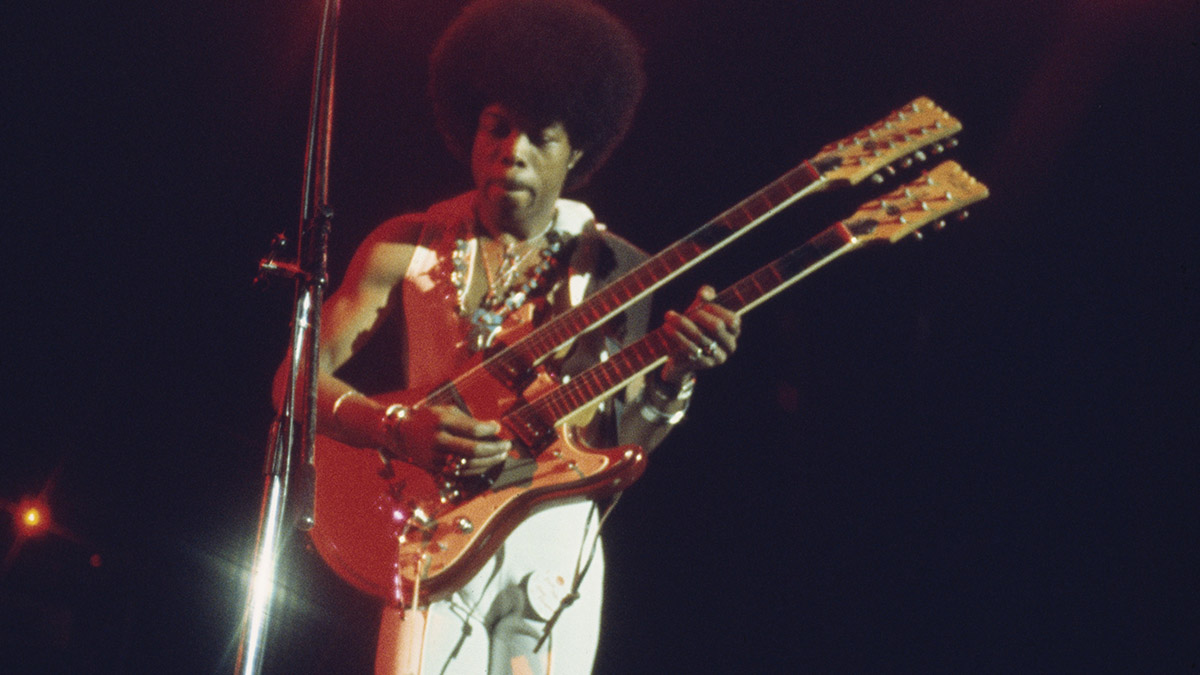Hone your rhythm chops with this lesson in ‘70s funk essentials – including the ‘sexy tremolo’
Loosen up that picking hand, fire up that wah, and get ready to dig into these 9 funk licks in the style of the decade’s greatest players

The profound shift from soul and R&B into funk during the ’70s saw many bands take up the mantle of James Brown’s innovations of the late ’60s. In the early part of the decade, African-American bands gained crossover success by moving into funk. Many blended Hendrix-style psychedelia with the JB ethos.
This was also the era of so-called ‘Blaxploitation’ movies, which featured some amazing funk soundtracks, many including the ubiquitous wah-wah (no better demonstrated than by the great ‘Wah Wah’ Watson of Funk Brothers fame).
Funk is a blend of many genres, and all the guitarists in this lesson are skilled at combining elements of R&B, soul, Motown and funk to create a groovy rhythmic soup.
We’ll look at ideas from Leroy ‘Sugarfoot’ Bonner (The Ohio Players), Tony Maiden (Rufus, Chaka Khan), Bruce Conte (Tower Of Power), Onnie McIntyre and Hamish Stuart (Average White Band), Skip Pitts (Isaac Hayes) and, of course, Wah Wah Watson (Rose Royce, Blondie, Michael Jackson, Stevie Wonder and many more).
Example 1. Single-note line
To kick things off, here’s a two-part riff (Ex1 and 2) in the style of Sugarfoot Bonner. Ex1 features a single-note line that mainly targets the b7 and 6th of G Mixolydian over the groove.
It’s the first of two interlocking parts and is played very straight, with most of the rhythms landing on strong downbeats or offbeat eighth notes. The inherent funkiness of this line comes from its relationship with the second guitar, as tabbed in Ex2.
Example 2. Funky rhythm with ‘pushed’ feel
The second part of the riff is more heavily syncopated, creating a call and response effect between parts 1 and 2. The 1/16th-note push is a feature that crept into a lot of ’70s funk (the last 1/16th note of the bar is pushed into a tied downbeat) and is seen in aplenty here.
This can be a tricky rhythm to ‘feel’ correctly, and a great way to approach it is to play a muted downstroke on the ‘and’of beat 4, which allows for a more precise upstroke on the pushed 1/16th.
Example 3. Funky tritone with pushes
The next riff is typical of Tony Maiden’s work with Rufus, moving from chord I to IV targeting the funky tritone shape we saw last month with Cheese Martin.
There are some 1/16th-note pushes at the end of bars 1-3, so ensure your foot doesn’t follow this, but targets the downbeat instead. Focus on achieving a constant 1/16th-note motion over several strings with a much wider strumming arc in the picking hand.
Example 4. Double-stop groove
The Average White Band had a great way of combining chordal funk rhythm with more melodic single-note lines. This is another two-part example (Ex4 and Ex5).
First, a typical Onnie McIntyre groove that focuses on a double-stop shape of A (4th) and D (b7th) which results in a slightly ambiguous suspended sound. There’s no 3rd in this chord, so E7sus4 is the harmony implied by both guitar parts together.
Example 5. Minor-to-major lick
The previous part allows for a more melodic Hamish Stuart style idea to dovetail with it, based around E Mixolydian.
The minor to major 3rd (G-G#) is a typical blues move that instantly gives a hipper sound, as it resolves to the more comfortable-sounding major 3rd from an ‘outside’ note a semitone below. This is a neat trick that you can try on literally any consonant ‘inside’ note, but use it sparingly or it will begin to sound predictable.
Example 6. Jazzy sounding funk rhythm
Bruce Conte from Tower of Power was a huge Jimmy Nolen fan, and this comes through in his frequent use of dominant 9 chords.
Rather than sticking to the James Brown signature ‘static chord’ idea, however, Conte often moves his chords around the neck chromatically. He also brings a touch more harmonic sophistication and syncopation than James Brown-style funk. This can be seen in the jazzy B7#5#9 chord used here.
Example 7. Funky wah-wah groove
Our first wah-wah groove, in the style of Wah Wah Watson, can be seen as an extension of the classic ‘whacka whacka’ sound first heard from Skip Pitts on Isaac Hayes’ classic Theme From Shaft.
The G octave notes inside the fretting hand mutes are a nice coordination exercise between the two hands. Use an 8th note wah down/up motion while the faster wah-wah rhythm in bars 2 and 4 requires a doubling of your speed to 16th notes.
Example 8. Driving wah-wah rhythm
The next idea is one of Wah Wah Watson’s favourite techniques, which he used almost everywhere on albums by everyone from Rose Royce to Blondie. The triplet rhythm needs a quick down-up-down strum, finishing with an upstroke on beat 1 of the first bar.
Use this final downbeat as the target for both the rhythm and the wah-wah as it goes from open to closed. If you’re not used to playing wah-wah rhythm it might take a while to get the relaxed feel required.
Example 9. Tremolo-picked slide with delay
This final example is known in some circles as the ‘luxuriant swoon’ and can best be described as a ‘sexy tremolo’. Watson created this with a delay of somewhere between 200-250ms with 3-4 repeats and then tremolo picked while his fretting hand slid from the pickup area down the fretboard.
Think of those sultry sounds behind Barry White, Marvin Gaye and Maxwell and you’ll instantly see how useful this simple technique can be.
Get The Pick Newsletter
All the latest guitar news, interviews, lessons, reviews, deals and more, direct to your inbox!
Steve is one of the UK’s most versatile guitar players and professional music educators. He has toured and played for the likes of Mica Paris, Lily Allen, Ronan Keating, Lulu, Westlife and Lianne Rimes. Between performing in the West End and recording as a busy session musician, Steve also regularly writes for Total Guitar and Guitar Techniques magazines. He’s also BIMM London’s Head of LPW (Live Performance Workshop) and one of its senior guitar specialists. He loves to share his knowledge and passion for playing and getting the best from guitarists, whatever the level.
“There are so many sounds to be discovered when you get away from using a pick”: Jared James Nichols shows you how to add “snap, crackle and pop” to your playing with banjo rolls and string snaps
Don't let chord inversions bamboozle you. It's simply the case of shuffling the notes around








![Joe Bonamassa [left] wears a deep blue suit and polka-dotted shirt and plays his green refin Strat; the late Irish blues legend Rory Gallagher [right] screams and inflicts some punishment on his heavily worn number one Stratocaster.](https://cdn.mos.cms.futurecdn.net/cw28h7UBcTVfTLs7p7eiLe.jpg)


